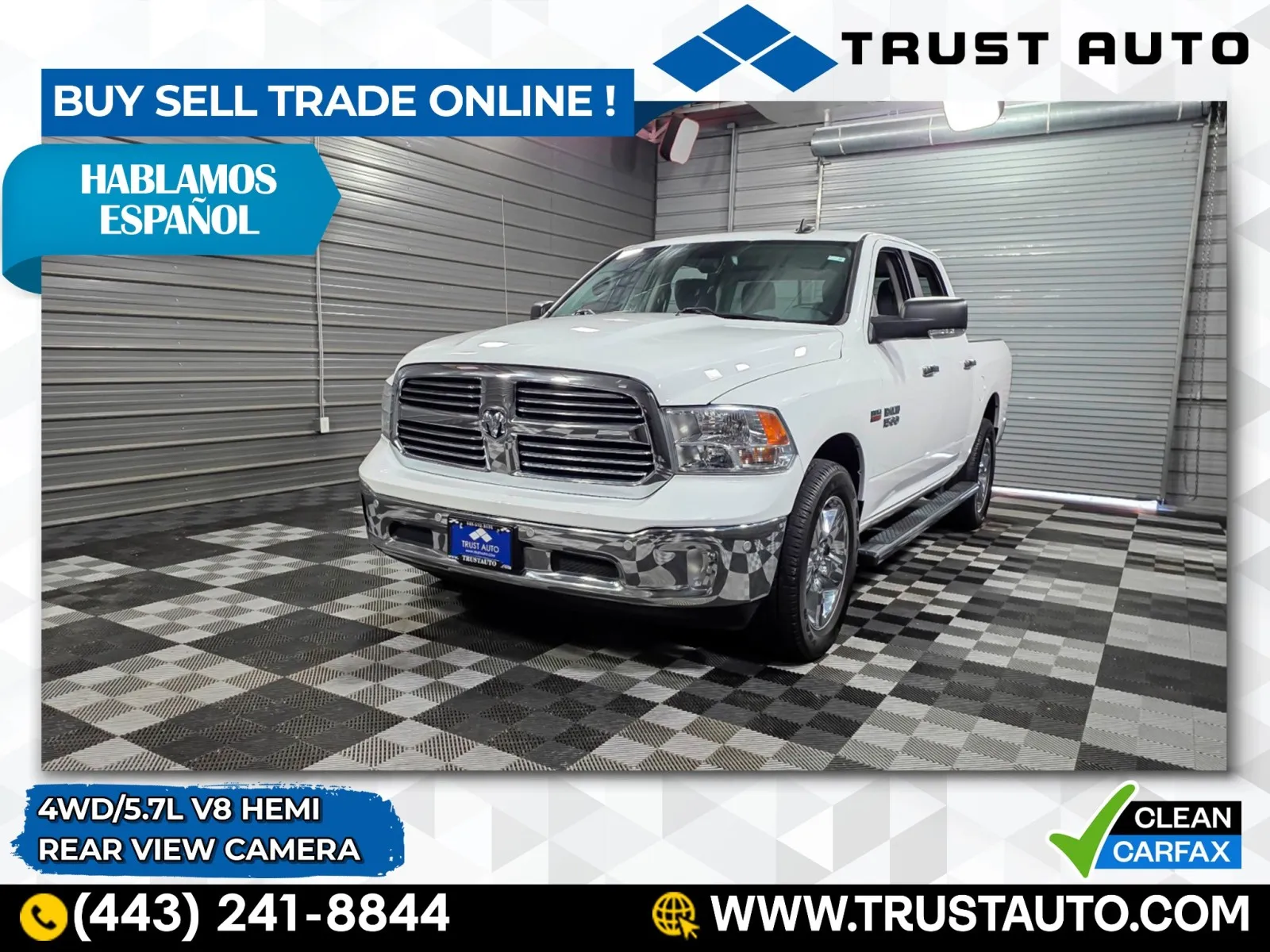The Ultimate Guide to the Ford F-150 Raptor
Table of Contents

The Ultimate Guide to the Ford F-150 Raptor
For more than 40 years, The F-series has been Ford’s best-selling vehicle, and along the way, the Raptor pickup has periodically arrived to take its place as the king of the F-150. It’s a powerful machine that can eat many performance cars for lunch.
Powered by a twin-turbo 3.5L EcoBoost engine, this beast churns out 450 horsepower and 510 lb-ft of torque. It can fit up to six people, carry 52.8 cubic feet of cargo, and tow 8000 pounds while still being able to tackle just about any terrain. Optimized for off-road, the F150 Raptor features Fox Racing Sport tune shocks, an independent front end, and a five-link rear suspension with electronically locking differentials.
But, the Raptor was never supposed to have happened as Ford never had plans for a performance F-series truck. So what changed?
How is the F-150 Raptor Come to be? The Story…
The Ford F-series proved to be a successful truck from the start. As America started to return to normal after World War II, this Ford pickup became the right companion. It was powerful, durable, affordable, and, most of all, easy to repair. Customers were attracted to the F-series’ great value.
But things changed thanks to competition from arch-rival Chevrolet. In 1990, when Ford was busy with the eight-generation Ford F-150 , Chevy launched the 454 SS, a performance pickup truck that came out of nowhere. Americans had never seen (or driven) anything like it.
A year later, GMC launched a smaller performance truck with equal, if not better, capabilities. The 4X4 Syclone featured a turbocharged 4.3-liter V-6 that packed 280 horsepower and easily smoked a Ferrari 348. The idea of the fastest production truck on the planet coming from GM didn’t sit well with Ford executives.
So, the folks at the Blue Oval pulled together the experts from its Special Vehicle Team (the people who built the SVT Cobra). Two years later, in 1993, the SVT Lightning hit the streets as part of the ninth-generation F-series.
Ford modified a 5.8-liter V-8 with components from the GT40 sports car to generate 240 horsepower. The company even brought in racing legend Jackie Stewart to upgrade the handling. With a quarter-mile time of 15.6 seconds and the ability to hit 60 mph from a standstill in 7.2 seconds, the SVT Lightning took the fastest truck title.
From the SVT Lightning to the Raptor
A second-generation SVT Lightning runs from 1999 to 2004 as part of the 10th-generation F-150. Using a turbocharged 5.4-liter Triton V-8, this super truck pushed out up to 380 horsepower. As a result, straight-line acceleration was fastly improved, hitting 0-60 mph in 5.2 seconds, according to Car and Driver .
With the desire to keep the performance truck streak going, Ford went to work planning on another Lightning to coincide with the upcoming eleventh-generation F-150. But development problems halted the action and caused Ford to shift gears. So, instead, Ford ditched the idea of making a stupidly fast tarmac truck. The new direction would rely on the company’s experience with the Baja 1000 race. This is how the Raptor became off-road oriented, and an entirely new market for rugged performance trucks came into being.
Ford unveiled the all-new F-150 SVT Raptor at the 2008 SEMA show in Las Vegas. It featured an ultra-wide front end with a massive FORD grille, a vented hood, 35-inch wheels, and a molten orange color scheme. But the 320-horsepower, 5.4-L V8 was not the star of the show. It was the race-oriented Raptor R and its 500-horsepower, 6.2-liter V-8 that got all the attention.
To make things even more insane, Ford sent the Raptor R directly from the show to the Baja 1000. While Ford’s goal was to have the Raptor complete the course, it could do more. Driving for over 25 hours, the Raptor R hit 100 mph on a dry lake bed and managed to secure third place. The Raptor’s race results and its overall appearance help create a legacy that’s still going strong.
Fun Fact: The Raptor R was so insane off-road, Ford had to electronically limit production models to an off-road speed limit of 100 mph.
First-Generation Ford F-150 SVT Raptor (2010-2015)

The SEMA and Baja 1000 debuts helped burnish the Raptor’s reputation for rugged performance. The base model’s 5.4-liter V-8 offered 320 horsepower and 390 lb-ft of torque. An available 6.2-liter V-8 cranked out 411 horsepower and 434 lb-ft of torque. A six-speed automatic was the sole transmission. And the Raptor was available in either SuperCab or SuperCrew body style.
Beyond its stock F-150 DNA, the Raptor’s off-road credentials came from upgraded Fox Racing shocks with redesigned A-arms, a 7-inch wider axle track, and a rear locking differential. Anti-lock brakes (ABS), electronic stability control, traction control, and hill-descent control were also part of the package. But, all the electronic assists could be turned off (except ABS) for pure off-road adventures.
Thanks to a new grille, mounted clearance lamps, wider fenders, a composite hood, and a wide-track friendly cargo bed, the Raptor easily stood out from an ordinary F-150. The only things they had in common were the headlights and cabin structure.
Ford had modest expectations for the Raptor, but first-year sales of 10,000 units far exceeded initial hopes. And to keep the momentum going for the 2011 model year, the base 5.4-liter engine was dropped in favor of the 6.2-liter V-8, becoming the sole powerplant.
Second-Generation Ford Raptor (2017-2020)

Ford teased the truck with the debut of a pre-production second-gen Raptor at the 2015 Detroit International Auto Show. While the 13th-generation F-150 was already on the streets, the production Raptor would need another two years to reach showrooms.
Dropping the SVT tag, the 2017 Raptor debuted, weighing 500 pounds fewer thanks to a new steel frame and an aluminum body. The powerplant was switched to a twin-turbo 3.5-liter V6 (which also helped the weight reduction). The new engine, paired with a 10-speed automatic, generated 450 horsepower and 510 lb-ft of torque.
Chassis improvements included two additional inches of ground clearance along with 17-inch wheels and 35-inch all-terrain tires. Simultaneously, a new transfer case and terrain management system provided improved four-wheel-drive performance. The driver could now select from normal, tow, snow/sand, Baja, and rock-crawl modes.
Ford also bestowed the second-gen Raptor with advanced technology such as adaptive cruise control, automatic start/stop, a surround-view camera, lane departure warning, and trailer backup assist.
Third-Generation Ford Raptor (2021- Present)

The third-gen Ford Raptor launched in February 2021 with more aggressive styling and the same twin-turbo V-6 as the previous Raptor. Improvements include new engine tuning and an upgraded cooling system. A reworked suspension with five links, 24-inch coils, and improved Fox shocks provided a smoother off-road ride and increased suspension travel.
Significantly, Ford has confirmed that a Raptor R will come to market sometime in 2022 to take on the RAM TRX super truck. There are no specifics yet. But, it’s a safe bet that the Raptor R will be powered by a version of the 760-horsepower supercharged 5.2-liter Predator V-8 used in the Shelby Mustang GT500 .
Quality Used Trucks at Trust Auto
Trust Auto in Sykesville is Maryland’s used truck headquarters. Discover our huge selection of pickups, including the Ford F-150 , Chevrolet Silverado , RAM 1500 , and Toyota Tundra . We even carry heavy-duty trucks perfect for most work needs. Contact us today for all the details.




